| 786 Boiler at Historic Machinery for
restoration. |
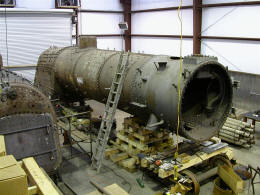
Photo: John Mandell |
| Old stay bolts being drilled out. |
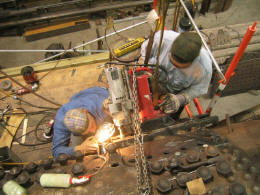
Photo: Historic Machinery |
| Fire box area |
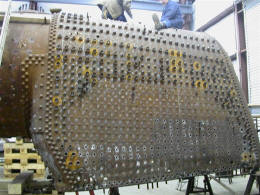
Photo: John Mandell |
| Back sheet of the firebox |
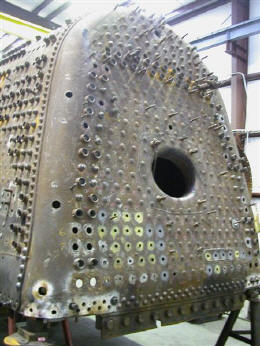
Photo: John Mandell |
| Left wrapper section removed, exposing the mud
ring |
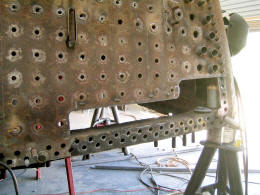
Photo: Historic Machinery |
| New lower left wrapper sheet welded in place,
ready for mud ring rivets. |
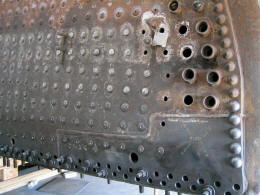
Photo: Historic Machinery |
| Mud Ring rivets completed |
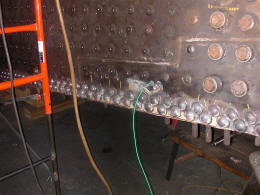
Photo: John Mandell |
| Section of new stay bolts |
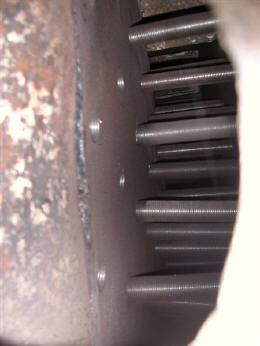
Photo: John Mandell |
| A few diagonal brace rivets had to be replaced,
with limited access. Some creative tooling was used to back & drive
the rivets. |

Photo: Historic Machinery |
| Inside the fire box, the crown sheet is
undergoing repairs. The shoulders, or radial sections, are being replaced with new plates
and stay bolts. |
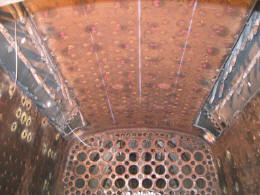
Photo: Historic Machinery |
| Old shoulders are cut out |
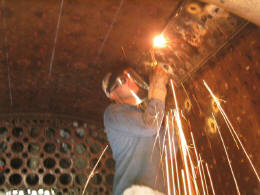
Photo: Historic Machinery |
| New shoulders have been patterned and
fabricated, ready for installation. |
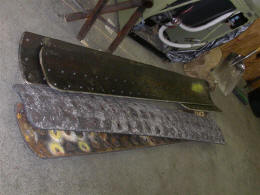
Photo: John Mandell |
| New shoulders in place, ready to be welded in.
This completes the crown sheet repairs and pretty much buttons up the inside
of the firebox area of the boiler. |

Photo: Historic Machinery |
| Driving hot rivets in the mud ring |
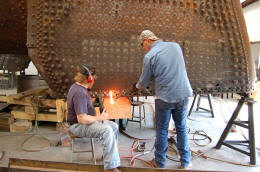
Photo: Historic Machinery |
| Red-hot rivets - Hot work |
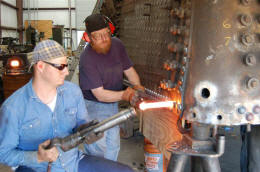
Photo: Historic Machinery |
| Another person is on the inside of the firebox
backing up the hot rivet. |
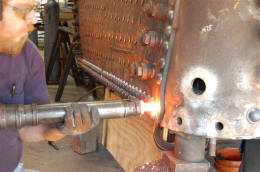
Photo: Historic Machinery |
| Driving hot rivets is heavy work |
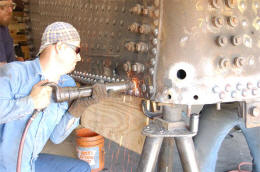
Photo: Historic Machinery |
| Another completed repair of the wrapper roof
sheet, top left side |
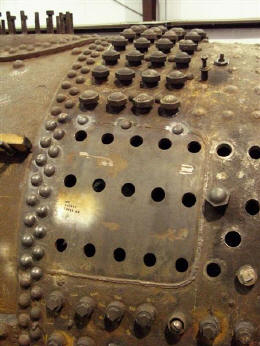
Photo: Historic Machinery |
| New side sheet fabricated and ready for
installation on the right side wrapper |
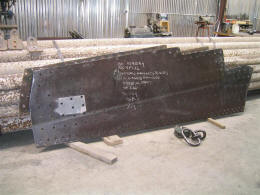
Photo: Historic Machinery |
| Super Heater Header being removed, allowing
removal of the dry pipe |
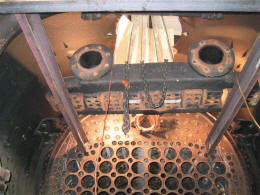
Photo: Historic Machinery |
| Lapping the superheater header unit seats, the
connection between the superheater header & tubes. |
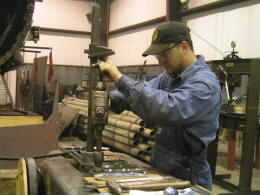
Photo: Historic Machinery |
| The superheater header seats are machined and
then polished at a 45 degree bevel. The superheater tubes end in a
spherical seat. The 2 photos are of a seat that has been partially
machined & polished. A gauge ball and some dye is used to indicate the
point of contact. The top photo indicates only 3 points of contact -
no good! After more work, the lower photo shows an almost continuous
line, nearly ready for a good seal. The goal is one unbroken line
indicating a good seal. |
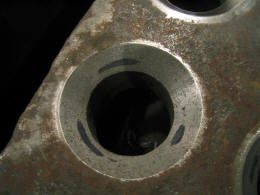
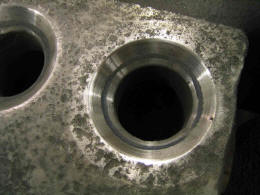
Photo: Historic Machinery |
| Machining the dry pipe face
|

Photo: Historic Machinery |